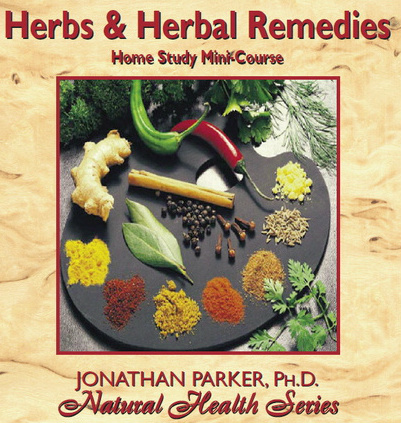How to Dry Fresh Herbs for Long-Term Use

Before diving in, please note: This post is for informational purposes only. If you’d like to know more about how we approach topics, feel free to check out our friendly Disclaimer Page.
Hey there, amazing readers! 
We’re committed to delivering quality posts, and your support (even just sticking around despite the ads) means everything to us. So, bear with us, and thanks for helping us keep the good vibes rolling. Now, on to the fun stuff!
TRANSLATE BUTTON AT THE END OF THE ARTICLE
A Quick Overview
Drying fresh herbs is one of those kitchen skills that feels like magic once you get the hang of it. Imagine walking into your pantry and being greeted by jars bursting with the fragrant scent of basil, thyme, or rosemary. It’s like having a little piece of summer all year round. Not only does drying herbs save money, but it also elevates your cooking game. Let’s dive into how to dry fresh herbs for long-term use, making our culinary adventures even more delightful!
Why Drying Herbs is a Game-Changer for Your Kitchen
Drying herbs transforms your cooking experience. Fresh herbs are fantastic, but they often wilt and lose their flavor before you can use them all. Drying offers a way to preserve that vibrant flavor and aroma.
Here are a few reasons why you should consider drying herbs:
- Longevity: Dried herbs can last for months, sometimes even years, when stored properly. You’ll always have your favorite flavors on hand.
- Convenience: When a recipe calls for herbs, you can simply grab your dried stash rather than rushing to the store for fresh ones.
- Space Saving: Dried herbs take up less space than fresh herbs. A few jars can replace a whole basket of fresh herbs in your fridge.
- Cost-Effective: Buying herbs in bulk when they are in season and drying them means you save money in the long run.
- Custom Flavor Profiles: You can create your own blends tailored to your cooking style. Think Italian seasoning or a special herb mix for grilling.
- Eco-Friendly: Reducing waste by using every part of your herb plant is sustainable and smart.
- Health Benefits: Many herbs carry health benefits, and having them dried allows you to incorporate them into your diet more easily.
- Personal Touch: There’s something satisfying about growing, harvesting, and drying your herbs. It connects you to your food.
- Gift Potential: Dried herbs make great homemade gifts, especially when presented in decorative jars.
- Inspiration: Having a variety of dried herbs on hand sparks creativity and experimentation in your cooking.
The Best Fresh Herbs to Dry for Maximum Flavor
Some herbs lend themselves better to drying than others. Here’s a list of my go-to herbs that dry beautifully and retain a punch of flavor:
- Basil: A summertime favorite, basil loses some flavor when dried, but it still brings a lovely aroma to dishes.
- Thyme: This herb holds its flavor well and can be used in soups, stews, and roasted dishes.
- Oregano: Perfect for Italian dishes, dried oregano has a stronger flavor than fresh.
- Rosemary: Its robust flavor makes it ideal for meats and marinades.
- Sage: Dried sage has a warm, earthy flavor that’s perfect for autumn dishes.
- Tarragon: Known for its anise-like flavor, tarragon is excellent for dressings and sauces.
- Mint: Great for teas and desserts, dried mint can add a refreshing twist.
- Dill: Perfect for pickling and seafood dishes, dill retains its flavor well when dried.
- Parsley: While not as flavorful as others when dried, parsley still works well in various recipes.
- Chives: Dried chives add a mild onion flavor and are great for soups and salads.
Essential Supplies You Need for Drying Herbs
Before we start drying herbs, let’s gather our tools. Here’s a handy checklist:
- Fresh Herbs: Obviously, the star of the show. Go for vibrant, healthy plants.
- Scissors or Pruning Shears: You need something sharp to snip those herbs off cleanly.
- String or Twine: For air drying methods, sturdy string helps keep your herbs together.
- Baking Sheet: If you’re opting for oven drying, a flat baking sheet is essential.
- Parchment Paper: Line your baking sheet to prevent sticking when oven drying.
- Microwave-Safe Plate: For those quick microwave moments, ensure it’s safe for high heat.
- Glass Jars or Airtight Containers: Once dried, you’ll need something to store your herbs.
- Labels and Marker: Keep things organized by labeling your jars with the herb name and date.
Harvesting: Timing is Everything for Perfect Herbs
Timing your harvest is crucial for the best flavor. Here are some tips to consider:
- Pick at Peak Flavor: Harvest herbs just before they flower. This is when they are most aromatic and flavorful.
- Morning Harvest: Early morning is the best time to collect herbs. The dew has dried, and the oils are most concentrated.
- Dry Leaves: Ensure that the leaves are dry and free from moisture before drying them. This prevents mold.
- Harvest Regularly: Regularly snipping off leaves encourages new growth and keeps your plant healthy.
- Select Healthy Stems: Choose stems that are vibrant and free from pests or disease.
- Use Clean Scissors: Always use clean tools to prevent transferring any bacteria to your herbs.
- Don’t Over-Harvest: Take only a few stems at a time, allowing the plant to continue growing.
- Look for Full Leaves: Choose herbs with full, thick leaves for the best flavor.
- Avoid Dying Leaves: Steer clear of any leaves that look wilted or discolored.
- Be Mindful of the Weather: Harvest right after a dry spell; wet herbs can lead to quicker spoilage during drying.
Air Drying: The Simple Method for Herb Preservation
Air drying is the classic way to preserve herbs. Here’s how to do it:
- Bundle the Herbs: Gather a handful of stems and tie them together with string or twine.
- Choose a Location: Find a warm, dry, and dark place to hang your herbs, away from direct sunlight.
- Hang Upside Down: Hang the bundles upside down to allow moisture to escape from the stems.
- Leave Space: Ensure there’s adequate space between bundles for air circulation.
- Wait Patiently: This method can take 1-3 weeks, depending on the humidity and herbs used.
- Check for Dryness: Herbs are ready when they crumble easily between your fingers.
- Remove Leaves: Once dried, strip the leaves from the stems.
- Store in Jars: Place the dried leaves in airtight jars, away from light.
- Label: Don’t forget to label your jars with the herb name and drying date.
- Enjoy the Aroma: Trust me, walking past those drying herbs will be a delight!
Oven Drying: Quick and Easy Herb Drying Technique
If you need your herbs dried in a hurry, the oven method is for you. Here’s how:
- Preheat the Oven: Set your oven to the lowest temperature, usually around 170°F (76°C).
- Prepare the Herbs: Spread your herb leaves out on a baking sheet lined with parchment paper.
- Avoid Overcrowding: Don’t pile them on top of each other; spread them out to ensure even drying.
- Keep the Door Ajar: Prop the oven door open slightly to allow moisture to escape.
- Check Regularly: Bake for about 30-60 minutes, checking every 15 minutes. The herbs should become crisp.
- Remove and Cool: Once dried, take them out and let them cool before handling.
- Store in Containers: Transfer them into your jars for safe-keeping.
- Temperature Matters: Higher temperatures can diminish flavor, so keep an eye on the heat!
- Use a Food Thermometer: If you are unsure, a thermometer can help confirm the right temperature.
- Save Time: This method is fantastic for those last-minute cooking needs!
Microwave Drying: Speedy Herbal Solutions at Hand
For those moments when you really need dried herbs fast, the microwave comes to the rescue. Here’s how to do it:
- Prepare the Plate: Place herb leaves in a single layer on a microwave-safe plate.
- Cover with Paper Towels: Lay a paper towel over the leaves to absorb moisture.
- Microwave in Intervals: Start with 30-second intervals, checking for dryness after each.
- Continue Until Dry: Depending on the herb, this process may take 1-3 minutes. Watch closely to prevent burning.
- Let Cool: The herbs will continue to dry slightly after microwaving. Let them cool before handling.
- Crush and Store: Strip the leaves and store them as you would with air-dried herbs.
- Caution: Some herbs may lose their flavor quicker this way, so use it wisely!
- Experiment: Test on small batches to find what works best for you.
- Use for Cooking: Dried herbs from the microwave can perk up meals in a jiffy.
- Quick Fix: This method is perfect when you’ve got a recipe calling for herbs but no time to spare!
Tips for Storing Dried Herbs to Keep Them Fresh
Once you’ve dried your herbs, it’s crucial to store them properly. Here’s how to keep them at their best:
- Use Airtight Containers: Glass jars or vacuum-sealed bags work best to keep air out.
- Cool and Dark: Store jars in a cool, dark place away from heat and light. A pantry or cupboard is ideal.
- Avoid Humidity: Keep dried herbs away from moisture, which can lead to spoilage.
- Label and Date: Always label your jars with the herb name and the date dried. This helps you know when to use them.
- Check Regularly: Even dried herbs can go bad. Check for signs of moisture or off smells.
- Avoid the Fridge: Storing herbs in the refrigerator can introduce moisture, which is a no-go.
- Crush Before Storing: Crushing dried herbs before storing can release their essential oils, enhancing flavor.
- Use Desiccants: If you’re really serious, consider adding a food-safe desiccant to absorb excess moisture.
- Rotate Stock: Use older herbs first to keep your supply fresh.
- Stay Organized: Keep similar herbs together to make finding what you need easier.
Common Mistakes to Avoid When Drying Herbs
Like any skill, drying herbs has its pitfalls. Here are some common mistakes to steer clear of:
- Not Washing: Always wash herbs thoroughly before drying to remove dirt and insects.
- Using Wilted Herbs: Dried herbs should be fresh and vibrant. Wilted ones lead to poor flavor.
- Crowding the Oven: Overloading your baking sheet can lead to uneven drying.
- Skipping the Cooling: Don’t skip letting dried herbs cool before storing; this can cause condensation.
- Leaving in Direct Sunlight: Sunlight can fade flavors. Choose a dark drying spot.
- Not Checking Regularly: Whether air drying or using the oven, check often to prevent over-drying or burning.
- Ignoring Storage Conditions: Light, heat, and moisture are the enemy of dried herbs. Keep them well-protected.
- Crushing Too Early: Wait until right before you use them to crush dried herbs; this keeps their oils intact longer.
- Not Labeling Jars: Forgetting to label can lead to confusion later on.
- Being Impatient: Good things take time! Don’t rush the drying process.
How to Crush and Store Dried Herbs Effectively
Crushing and storing dried herbs can seem straightforward, but there’s a method to get the best out of them:
- Use Clean Tools: Start with clean, dry tools, such as a mortar and pestle or a spice grinder.
- Crush Just Before Use: For maximum flavor, crush herbs right before adding them to your dish.
- Store Whole Initially: Keep herbs whole until you’re ready to use them to preserve flavor.
- Avoid Over-Crushing: You want a coarse texture for some dishes, so don’t powder everything.
- Use a Sifter: If you want finer herbs, sift them after crushing to separate leaves and stems.
- Keep Containers Airtight: Use small jars with tight-fitting lids to keep air out.
- Choose the Right Jar Size: Store smaller quantities in smaller jars to limit exposure to air when opened.
- Avoid Plastic Bags: They can trap moisture and odors. Stick to glass or ceramic.
- Monitor Shelf Life: Dried herbs generally last about 1-3 years. After that, the flavor diminishes.
- Experiment with Blends: Keep some herbs separate and create your own blends for customized seasoning.
Creative Ways to Use Your Dried Herbs in Cooking
Now that you’ve dried your herbs, how do you use them? Here are some ideas to inspire you in the kitchen:
- Herb-Infused Oils: Add dried herbs to olive oil for a flavorful drizzle over salads or pasta.
- Soups and Stews: Dried herbs are perfect for adding depth to soups. Toss them in early to let their flavors meld.
- Homemade Seasoning Blends: Mix dried herbs together for customizable seasoning blends to suit any dish.
- Herb Crusts: Combine dried herbs with breadcrumbs for a flavorful crust on meats or vegetables.
- Spiced Salts: Mix coarse salt with dried herbs for a unique finishing touch.
- Herbal Teas: Some dried herbs, like mint or chamomile, make delightful teas.
- Flavorful Marinades: Incorporate crushed dried herbs into marinades for meats and vegetables.
- Breads and Muffins: Add dried herbs to bread dough or muffin mixes for an aromatic twist.
- Potpourri: Dried herbs also make lovely potpourri. Use your favorites to scent your home naturally.
- Crafts and Gifts: Use dried herbs in homemade sachets or bath salts for creative gifts.
Sharing the Joy: Gifting Homemade Dried Herbs
Finally, let’s talk about the joy of sharing. Dried herbs make wonderful gifts, and here’s how to present them:
- Choose Beautiful Jars: Invest in some pretty, reusable jars. They make your herbs look extra special.
- Create Labels: Get creative with labels. Write the herb name and a fun recipe idea on them.
- Add a Personal Touch: Include a handwritten note sharing why you love that particular herb.
- Themed Gifts: Create themed herb kits, like a pizza-making kit with oregano, basil, and garlic.
- Gift Baskets: Assemble a basket with jars of different dried herbs, oils, and spices for a culinary gift.
- Include Recipes: Share your favorite recipes using the dried herbs to inspire their use.
- Celebrate Seasons: Gift herbs that correspond to the seasons. Think fresh basil in summer or sage in fall.
- Crafting Ideas: Homemade herbal sachets or bath salts make lovely gifts for self-care enthusiasts.
- Host an Herb Exchange: Get a group of friends together to share and exchange dried herbs.
- Social Media Shout-Outs: Share your dried herb creations online to inspire others!
Conclusion
Drying fresh herbs for long-term use is a delightful journey. From growing and harvesting to drying and storing, each step enhances your culinary experience. Not only will you save money and reduce waste, but you’ll also have an array of flavors at your fingertips. So roll up your sleeves and get started! Your taste buds will thank you, and your friends might just be asking for some of your homemade dried herbs. Happy herb drying!

The Enlightenment Journey is a remarkable collection of writings authored by a distinguished group of experts in the fields of spirituality, new age, and esoteric knowledge.
This anthology features a diverse assembly of well-experienced authors who bring their profound insights and credible perspectives to the forefront.
Each contributor possesses a wealth of knowledge and wisdom, making them authorities in their respective domains.
Together, they offer readers a transformative journey into the realms of spiritual growth, self-discovery, and esoteric enlightenment.
The Enlightenment Journey is a testament to the collective expertise of these luminaries, providing readers with a rich tapestry of ideas and information to illuminate their spiritual path.
Our Diverse Expertise
While our primary focus is on spirituality and esotericism, we are equally passionate about exploring a wide range of other topics and niches 

To ensure we provide the most accurate and valuable insights, we collaborate with trusted experts in their respective domains 
Our blog originally focused on spirituality and metaphysics, but we’ve since expanded to cover a wide range of niches. Don’t worry—we continue to publish a lot of articles on spirituality! Frequently visit our blog to explore our diverse content and stay tuned for more insightful reads.


































































